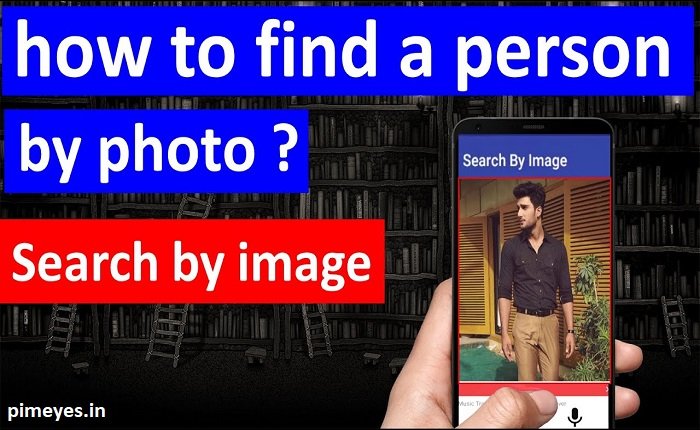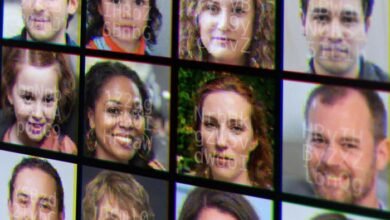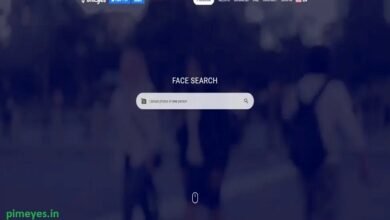Can We Search a Person by Image? Exploring Visual Search Technology

Can We Search a Person by Image?
In the digital age, the way we search for information has evolved significantly. One of the most interesting advancements is the ability to search a person by image. Traditionally, searching for someone online involved typing a name or description into a search engine, but the emergence of image recognition technology has opened up new possibilities. Now, we can search for a person simply by uploading their photo. This method offers a fascinating glimpse into how far technology has come and its potential to revolutionize our online experiences. But the question remains—can we truly search a person by image, and how effective is it?
What is Image Search Technology?
Image search technology allows users to search for information using an image as the primary input instead of text. Using advanced algorithms and artificial intelligence (AI), image search engines can analyze the contents of an image and match it to similar images across the web. Services like Google Images and social media platforms like Facebook and Instagram use this technology to identify and categorize images. When we search a person by image, the technology works by detecting facial features, objects, and even background elements, to match the image to similar ones on the internet. This process involves sophisticated AI tools such as facial recognition and machine learning models.
How Does Searching for a Person by Image Work?
Searching for a person by image requires a combination of several technologies. Initially, the image you upload is analyzed using facial recognition algorithms. These algorithms break down the image into key features such as the distance between the eyes, the shape of the nose, and other distinct facial features. Once the image is processed, it is compared against a large database of images to find matches. The search engine then returns results based on similarity and visual context. The process is quick, often providing results in a matter of seconds, but its accuracy can vary depending on the quality of the image and the size of the database.
The Role of Artificial Intelligence in Image-Based Search
Artificial intelligence plays a critical role in enhancing the accuracy and efficiency of image-based searches. Through machine learning, AI models are trained to recognize patterns in images and learn from vast datasets. These models can identify objects, scenes, and, most importantly, faces with high precision. When we search a person by image, AI algorithms focus on the unique features of a person’s face and compare them to a database of known faces, which may include public databases, social media platforms, and other digital repositories. Over time, the AI becomes better at identifying even subtle features that can help pinpoint a person’s identity.
The Benefits of Searching a Person by Image
The ability to search a person by image offers several advantages. First, it saves time by eliminating the need to manually search for names or other identifying information. Instead, you can rely on the visual recognition power of the search engine to do the heavy lifting. This is particularly useful for scenarios where you have limited information about a person. For instance, if you’ve seen someone at an event and want to know more about them, you can simply upload their photo and see if the search engine can find them online. Additionally, image-based search can assist in verifying the authenticity of a person’s online presence, helping identify fake profiles or scammers.
Limitations of Image Search Technology
Despite its many advantages, there are limitations to the technology when it comes to searching a person by image. One of the primary issues is privacy. Searching for someone online using their image can potentially infringe on their privacy rights, especially if the person has not consented to their image being publicly searchable. Additionally, image search technology may not always be accurate. Factors such as image quality, lighting, and angles can affect the results. If the database does not contain enough relevant images, or if the person is not well-known, the search may not yield meaningful results. Moreover, there are ethical concerns surrounding facial recognition technology, particularly regarding surveillance and misuse.
Legal and Ethical Considerations of Searching a Person by Image
As the technology to search a person by image continues to improve, legal and ethical questions arise. In many countries, laws are evolving to address the implications of facial recognition and image-based search. For instance, some jurisdictions require explicit consent before using someone’s image for such purposes. Additionally, concerns over the potential misuse of this technology in surveillance or tracking individuals without their knowledge are significant. There are also debates about the accuracy of facial recognition systems, as they have been shown to be less reliable for certain demographic groups. As this technology becomes more widespread, the need for clear regulations and ethical guidelines will become increasingly important.
Conclusion
Can We Search a Person by Image? The short answer is yes, we can. Thanks to advancements in artificial intelligence, machine learning, and image recognition technology, searching for a person using their image has become a reality. However, like all powerful tools, it comes with its own set of challenges, from privacy concerns to potential misuse. As technology continues to evolve, it will be important to find a balance between innovation and respect for individual rights. Whether you are using image search for personal reasons, professional purposes, or security, understanding the limitations and ethical implications of this technology is crucial. Ultimately, while searching a person by image is possible and increasingly accurate, it also raises important questions about privacy, security, and consent.




